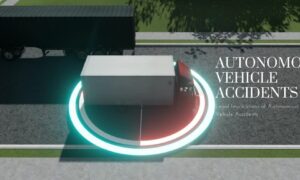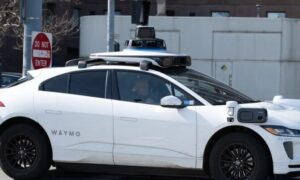The benefits promised by self-driving cars are hard to ignore. Who doesn’t want less accidents, less congestion, and less pollution? Unfortunately, recent studies show those benefits may be a long way off as most drivers are not yet ready to trust a self-driving car.
PIX Moving, a technology company that is creating a new ecosystem for smart vehicles, believes it has a solution to the problem. Its vision is for a future in which self-driving vehicles move the city around the people, rather than moving the people around the city.
The benefits of artificial intelligence for cities
Cars have shaped cities ever since they hit the mainstream more than 100 years ago. Ask someone about their city and one of the first things you are likely to hear is a traffic report. Communities are built around the access that streets and avenues provide. Parking garages are as prevalent as apartment houses in most urban areas.
While self-driving cars might offer drivers some relief from the tyranny of traffic, they do little to address the foundational problem found in modern urban design. It does not matter who is doing the driving, cities will continue to face the same problems as long as cars and other vehicles stay focused on the goal of moving around an ever-growing urban population.
As trends project that the future will see as much as 70% of the world’s population living in cities, experts are looking more and more to creative solutions that might be found in autonomous driving, Internet of Things, and other smart technologies. PIX Moving believes the ideal city of the future, which it calls PIX City, is a moving city without cars.
Examples of how a smart city will work
A smart city is a place where technology solves the problems inherent in urbanization. The data collected by smart devices allows governments to assess needs and improve infrastructure to meet those needs more efficiently and effectively.
Smart transportation systems are a core component of smart cities. In December 2015, the US Department of Transportation launched its Smart City Challenge, calling upon mid-sized cities across America to explore the potential of emerging transportation technologies. The Smart City Challenge envisioned the creation of “an integrated, first-of-its-kind smart transportation system that would use data, applications, and technology to help people and goods move faster, cheaper, and more efficiently.”
The technology that PIX Moving has developed is exactly what The Smart City Challenge envisions. Building upon the PIX Ultra-Skateboard, which is the world’s first road-level wheeled-robot, PIX provides a customizable modular space combined with an autonomous chassis. The resulting robo-vehicles will bring services to people wherever they are autonomously.
“When spaces are empowered with autonomous mobility, they become alive,” says Angelo Yu, CEO of PIX Moving. “The spaces in the modern city are fixed, unaffordable, and hardly accessible. Limited space resources, unaffordable housing, and unbelievable traffic jams have turned the modern city into a human-unfriendly place.”
In PIX City, spaces become alive and move around people to generate a human-centric lifestyle. Using the Ultra-Skateboard as a foundation, cities can provide a wide range of autonomous mobile services, such as sightseeing cars, self-driving shuttle vehicles, unattended vending cars, autonomous logistics cargo transports, multi-purpose self-driving rooms, and auto patrol cars. The technology can be applied in a wide range of environments including industrial parks, public parks, scenic spots, parking lots, airports, residential communities, and shopping malls.
“We’re not thinking about it as just a vehicle, but it’s more like a moving space,” says Yu. “Right now there is autonomous driving. We don’t need to have our feet on the pedal and our hands on the steering wheel, so we are free to do anything. In the future, autonomous vehicles won’t be cars, but rather moving spaces where passengers can enjoy different services along the way.”
Advancing self-driving through co-creation
PIX Moving believes the future of self-driving will be co-created by collaborative communities producing open source solutions. Its “3CM” model focuses on cognitive, configurable, and collaborative manufacturing as the way to advance self-driving technology.
Beyond the development of technology, PIX Moving sees developing partnerships with diverse industries as an essential step to finding real-life applications for self-driving solutions. For smart cities to become a reality, real estate developers, retail merchants, universities and institutes, and governments must play a role. Only then can cities be reshaped.
“We’re trying to empower those spaces with enhanced mobility, so you can better serve the people, making their lifestyle more versatile,” says Yu. “Only then can we really facilitate the sustainable development of cities.”


































